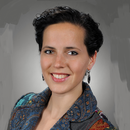Since the 1970s, several hundred targeted therapeutics have been developed against various types of cancer in adults. They are suitable, for example, for some patients with breast, lung or colon cancer and leukemia.
For children and adolescents with cancer, there are currently only around ten targeted therapeutics that have been approved as standard therapies alongside chemotherapy and radiation. In contrast to most standard therapies, the targeted drugs can often be taken at home in the form of juice or tablets. Affected families therefore hope that the therapy will result in shorter hospital stays, fewer side effects and long-term consequences. However, the success of the therapy depends on the type of cancer, the stage of the disease and, above all, the molecular target structure in the cancer cells against which the drug is intended to act.
In a new series of its video guide for affected families with presenter and physician Dr. Johannes Wimmer, the Hopp Children's Tumor Center Heidelberg (KiTZ) provides information on who is eligible for targeted therapies, how they work and what side effects can occur.
“Several targeted therapeutics specifically for children are currently in clinical development,” says Cornelis van Tilburg, pediatric oncologist at the Hopp Children's Cancer Center Heidelberg (KiTZ), the German Cancer Research Center (DKFZ) and Heidelberg University Hospital (UKHD), who also heads the Clinical Trials Department at the KiTZ. "In addition, a new EU regulation is soon to come into force, so that all relevant cancer drugs for adults will also be tested in clinical trials for the treatment of children. We therefore hope that doctors will soon have significantly more opportunities to help children and adolescents with targeted cancer drugs."
To the playlist “Targeted Therapies” (in German, but with subtitles in other languages)
More information on the video series

![[Translate to En:]](/fileadmin/_processed_/4/4/csm_250918_WimmerVideos_c85d077bb4.jpg)


